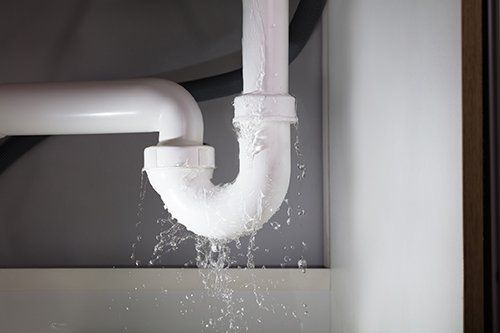Unveiling the Primary Sources of Water Leaks Within The House
Unveiling the Primary Sources of Water Leaks Within The House
Blog Article
Everybody has their own unique thinking in relation to How to Find Water Leaks.

Leaks not just create waste of water yet can additionally cause unnecessary damage to your home and advertise undesirable natural development. However, water leakages could go undetected considering that the majority of the pipework in our residence is concealed. By looking and understanding for day-to-day scenarios that create leaks, you can safeguard your home from future leaks and also unneeded damage. Today, we will take a look at 6 leakage triggers that might be causing your pipes to drip.
Immediate temperature adjustments.
Extreme temperature level adjustments in our pipes can trigger them to expand as well as contract suddenly. This expansion as well as tightening may cause fractures in the pipes, especially if the temperature level are below freezing.
Corroded water supply
This might be the cause of staining or bending on your water pipes. If our plumbing system is old, consider replacing the pipelines considering that they are at a greater risk of corrosion than the newer designs.
Faulty Pipeline Joints
The factor at which your pipelines connect is often the weakest web link in the waterline. Pipe joints can weaken in time, leading to water leaks. The majority of pipe joints are not quickly visible. If you have noisy pipes that make ticking or banging sounds, particularly when the warm water is activated, your pipeline joints are possibly under a great deal of pressure. It is a good idea to have your plumber inspect your system once a year.
Intruding roots
A lot of water leakages start outside the residence rather than inside it. You may notice wet spots or sinkholes in your backyard, and also that may mean that tree origins are getting into water lines causing water to permeate out.
Poor Water Connectors
Sometimes, a leak can be brought on by loose hose pipes and also pipes that provide your home appliances. More often than not, moving is what causes the loosened water Connections. You could find in the case of a cleaning maker, a hose pipe might spring a leak due to drinking throughout the spin cycle. In case of a water connections leakage, you may see water running directly from the supply line or pools around your appliances.
Blocked Drains
Obstructed drains may be frustrating and inconveniencing, however they can sometimes end up creating an overflow leading to rupture pipelines. Keep eliminating any kind of materials that may drop your drains that can obstruct them to stay clear of such hassles.
All the above are root causes of leaks but not all water leaks arise from plumbing leakages; some leaks may come from roof leaks. All leaks should be fixed instantly to avoid water damage.
Leaks not just trigger waste of water however can also trigger unneeded damages to your residence and promote unwanted organic development. By looking and comprehending for everyday circumstances that trigger leakages, you can safeguard your residence from future leaks and unnecessary damages. Today, we will look at six leakage triggers that may be creating your pipes to trickle.
At times, a leak can be triggered by loose tubes and pipelines that supply your appliances. In case of a water links leak, you may see water running straight from the supply line or puddles around your devices.
How To Check For Water Leak In Your Home
How To Check for Leaks
The average household's leaks can account for nearly 10,000 gallons of water wasted every year and ten percent of homes have leaks that waste 90 gallons or more per day. Common types of leaks found in the home are worn toilet flappers, dripping faucets, and other leaking valves. These types of leaks are often easy to fix, requiring only a few tools and hardware that can pay for themselves in water savings. Fixing easily corrected household water leaks can save homeowners about 10 percent on their water bills.
To check for leaks in your home, you first need to determine whether you're wasting water and then identify the source of the leak. Here are some tips for finding leaks:
Take a look at your water usage during a colder month, such as January or February. If a family of four exceeds 12,000 gallons per month, there are serious leaks.
Check your water meter before and after a two-hour period when no water is being used. If the meter changes at all, you probably have a leak.
Identify toilet leaks by placing a drop of food coloring in the toilet tank. If any color shows up in the bowl after 10 minutes, you have a leak. (Be sure to flush immediately after the experiment to avoid staining the tank.)
Examine faucet gaskets and pipe fittings for any water on the outside of the pipe to check for surface leaks.
Undetected water leaks can happen without the home or business owner even realizing. If you suspect a water leak, but not able to find the source. It is time to contact a professional water leak detection service, The Leak Doctor.
How To Find a Water Leak In Your Home
https://www.leakdoctor.com/blog/How-To-Check-For-Water-Leak-In-Your-Home_AE197.html

Hopefully you enjoyed our part about Most Common Causes of Leaky Pipes. Thanks for taking the time to read our piece of content. Enjoyed reading our posting? Please share it. Let somebody else find it. Many thanks for going through it.
Quality solution? Call. Report this page